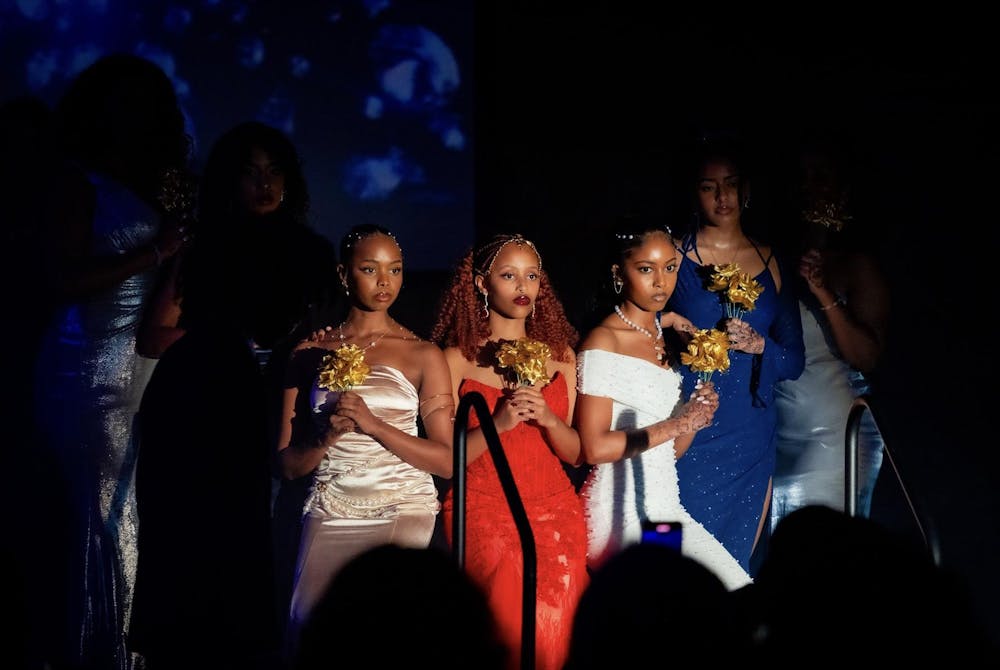The Ethiopian-Eritrean Student Association hosted its sixth annual charity showcase “A Taste of the East” Saturday evening, selling out Alumni Hall for a night of stunning cultural performances. From traditional rhythmic music to authentic Ethiopian attire, the event focused on this year’s theme “Uncut Gems” to honor East African culture in its natural, unaltered state.
The showcase featured three acts of dancing and modeling, with each act becoming progressively more modern. The crowd of 300 students and visitors enjoyed dinner catered by Engocha Market & Carryout and Afghan Kabob of Charlottesville, as well as a guest performance from ReMix, the University’s sole R&B a capella group.
Preparation for “A Taste of the East” began in September, according to Dani Medhin, president of EESA and fourth-year College student. In the months leading up to Saturday, EESA members worked to find sponsors, secure a venue and perfect their performances. Medhin said the process not only bonded EESA members but also gave them a newfound understanding of their culture’s practices.
“[“A Taste of the East”] is also for us to educate ourselves about our culture, especially for the people who feel a bit more of a disconnect from there,” Medhin said.
At Saturday’s event, EESA members displayed their culture with pride while raising money for charity. All proceeds from ticket sales went to two organizations — Fitsum Bahru Memorial Foundation, which awards financial assistance to Ethiopian youth seeking access to higher education, and Eritrean Humanitarian Organization, which provides aid and support to Eritrean refugees.
Performers kicked off the show by presenting traditional dances and fashion from eight countries — Burundi, Djibouti, Eritrea, Ethiopia, Kenya, Rwanda, Somalia and Sudan — as well as five tribes within Ethiopia. According to Medhin, one of EESA’s goals this year was to provide a stage for a variety of East African countries, particularly countries like Burundi, Kenya and Rwanda, which have not always been represented in “A Taste of the East.”
“We really wanted to try and give that space to those other countries … and [say], ‘Hey, you're valid and part of the East just as much as we are,’” Medhin said.
According to Medhin, the performances, particularly the fashion acts, were carefully designed to fit the theme “Uncut Gems.” She described the theme as a metaphor for cultural diaspora — like a diamond, which is found in its raw form then forced into a new shape, African culture has been removed from its source and molded into a certain ideal in the West, Medhin said.
“This year, we really wanted to [show] … we're beautiful in our uncut form,” Medhin said. “We wanted the clothing, the music and the space to speak for itself.”
The fashion acts reflected this theme through deliberate choreography. While in past years, models at “A Taste of the East” have often delivered skit-like walks to demonstrate specific East African customs, this year’s models followed a more serious choreography, letting audience members simply take in the sight of their clothing.
For this year’s dance acts, EESA worked with a designer in Ethiopia to acquire outfits tailor-made for each dance, according to Jonathan Taye, interval vice president of EESA, co-choreographer of the event and fourth-year Commerce student.
“In the past, we've kind of had to make the clothes work, but this year, we actually have exactly what we need,” Taye said.
Even the dances themselves aimed to showcase East African culture in an authentic manner. Performances included staple dances such as eskista — a traditional Ethiopian dance characterized by rapid, rhythmic shoulder movements — as well as dance styles of smaller ethnic communities. Taye said these diverse dance styles were intended to represent East African culture holistically.
“There's a lot more to see in East Africa than meets the eye,” Taye said. “I think the way that [“Uncut Gems”] is reflected [in dance] is that we're showcasing ethnic groups that even Ethiopians and Eritreans themselves might not be that familiar with.”
Fourth-year Engineering student Sulav Regmi said he was struck by the multicultural performances. While he was familiar with East African culture coming into “A Taste of the East,” he said he had not realized the extent to which the music, dances and fashion vary across countries and tribes.
“I'm amazed by the breadth of culture and how diverse everything is,” Regmi said. “I had high expectations, but [they’ve] all been blown away.”
The crowd’s energy remained high throughout the night as the event’s co-hosts — first-year College student Amen Afework and second-year College student Hamdael Eslaquit — kept audience members engaged. In one set, Afework and Eslaquit welcomed audience members to the stage for a dance-off featuring eskista and shim shim, an Eritrean dance also known for its jilting shoulder movements.
Between acts, audience members were also encouraged to browse a variety of products, including art, clothing and information booths set up near the foyer of Alumni Hall. Fourth-year College student Kiduse Gezehagne, who grew up surrounded by Ethiopian culture, said he felt inspired seeing the University community come together to enjoy his culture’s food and support East African communities.
“Seeing all these foundations that help different programs [in Ethiopia and Eritrea] … I really think it's really important to have certain things like [“A Taste of the East”],” Gezehagne said.
For many graduating EESA members, including Medhin and Taye, this year was their fourth and final time performing at “A Taste of the East.” Taye, having participated in the showcase since its early years, noted how the event has expanded into a much-anticipated annual event among students. He said this growth not only reflects increasing membership in EESA but also the thriving presence of the East African community on Grounds.
“This event just shows over the years how strong the Ethiopian and Eritrean community has grown at U.Va.,” Taye said. “I hope that for this year, for this event, it allows EESA to make its mark on the U.Va. community even more.”







